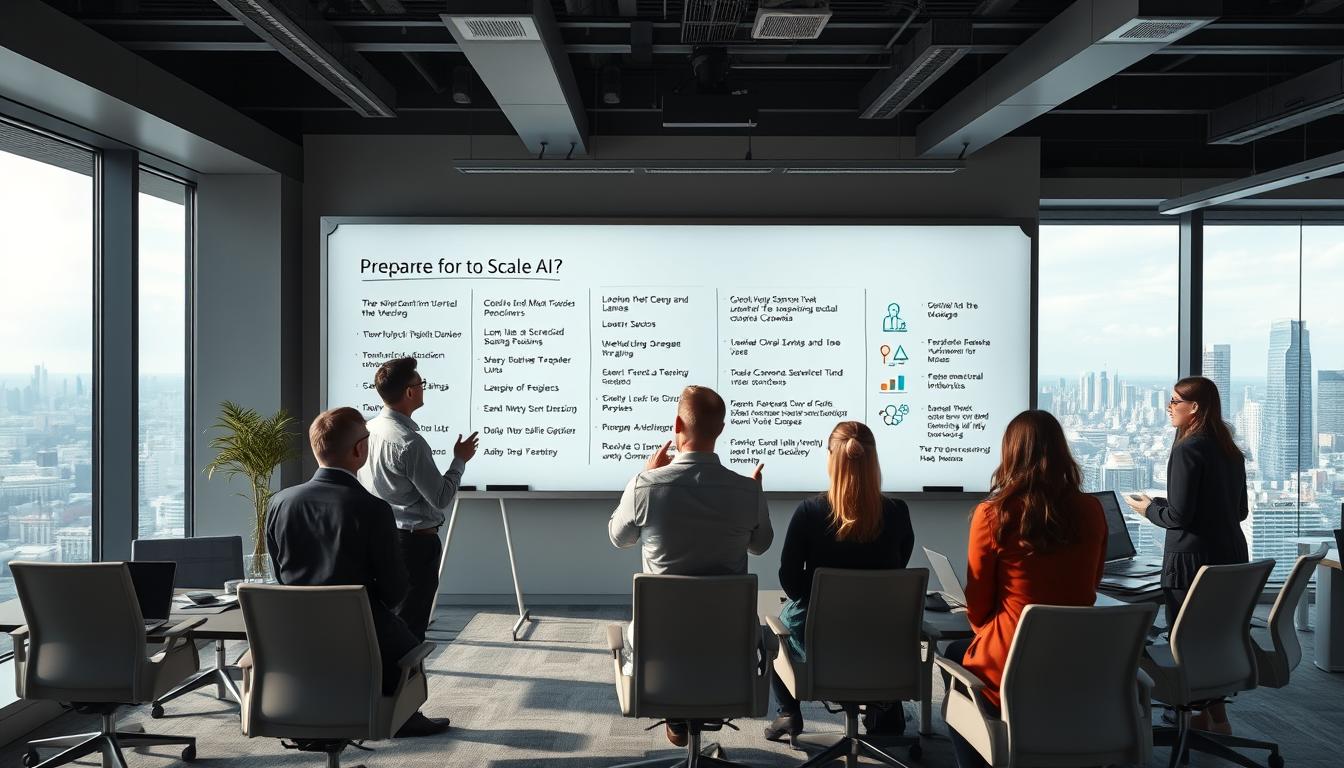What if one strategic adjustment could transform how employers perceive your application? For candidates preparing for competency-based interviews, understanding UKG’s unique hiring framework isn’t just helpful – it’s essential to standing out.
This guide reveals how to navigate UKG’s STAR-method questions while showcasing your alignment with their human capital management expertise. You’ll learn to craft responses that demonstrate problem-solving skills through real workplace examples – a critical expectation in their evaluation process.
RoboApply simplifies this journey with AI-powered tools. Its Auto Apply feature lets you submit applications to thousands of tailored roles instantly, while the platform’s interview coach prepares you for scenarios like discussing tailored resume examples or explaining technical knowledge relevant to workforce management systems.
Key Takeaways
- UKG prioritizes behavioral questions requiring STAR-method responses about past professional experiences
- Align your application materials with the company’s focus on workforce innovation using AI tools
- Research specific products like Kronos UKG Dimension to demonstrate genuine interest
- Prepare thoughtful questions about diversity initiatives and employee resource groups
- Use automated solutions to streamline application processes while maintaining personalization
Understanding the UKG Interview Process
Breaking down hiring phases helps candidates navigate expectations strategically. The selection journey typically involves three key stages, each designed to assess different aspects of your professional profile.
Key Phases in Candidate Evaluation
After submitting your application, the talent acquisition team reviews your materials for:
- Alignment with role-specific technical requirements
- Evidence of problem-solving in past positions
- Cultural fit indicators through project examples
Successful applicants progress to a competency discussion. This 30-minute conversation focuses on how you’ve handled workplace challenges rather than generic skills lists.
Structuring Impactful Responses
The STAR framework transforms experiences into compelling narratives. Consider this example:
“Situation: Our team missed three consecutive project deadlines
Task: Redesign workflow without additional resources
Action: Implemented daily standups and priority matrix
Result: Reduced delays by 40% within one quarter”
Practice this format using diverse scenarios – from conflict resolution to innovation initiatives. Tools like mastering interview techniques help refine your delivery through simulated practice sessions.
Remember to prepare questions about team objectives and success metrics. This demonstrates your strategic approach to potential contributions.
Essential UKG Interview Questions and How to Answer Them
Preparation becomes easier when you know what to expect. This section breaks down common scenarios and effective ways to demonstrate your qualifications through structured examples.

Common Behavioral and Situational Questions
When discussing past projects, focus on measurable outcomes. For product management roles, you might encounter:
“Situation: Our HR analytics tool faced low adoption rates
Task: Improve user engagement without redesigning core features
Action: Conducted stakeholder workshops to identify pain points
Result: Increased daily active users by 65% in 8 weeks”
This approach shows your ability to diagnose issues and implement targeted solutions.
Examples That Demonstrate Problem-Solving Skills
Feature prioritization questions test your decision-making framework. A strong response might include:
- Using JIRA to track customer feedback trends
- Balancing technical debt reduction with new feature development
- Aligning sprint goals with quarterly business objectives
Highlight collaboration methods like Agile standups or retrospective meetings. For inspiration on structuring achievement-focused answers, review these assistant manager resume templates that showcase similar skills.
Tips for Acing Your UKG Interview
Success in modern hiring processes requires more than polished credentials. Your ability to connect personal achievements with organizational priorities often determines the outcome. Start by studying the company’s technology ecosystem – particularly how their workforce management platforms solve real business challenges.
Decoding Organizational DNA
Effective preparation involves three strategic layers:
- Review recent press releases about product updates like cloud-based Kronos solutions
- Analyze Glassdoor reviews for department-specific collaboration patterns
- Identify leadership priorities through executive LinkedIn posts
When discussing ERGs, frame questions around specific initiatives: “How does the Women’s Leadership Network support career development?” This shows genuine interest in their inclusion efforts beyond surface-level awareness.
Building Your Narrative Bridge
Transform your resume bullet points into mission-aligned stories using this framework:
1. Challenge: Legacy payroll system caused 20% processing errors
2. Action: Led migration to automated platform
3. Impact: Reduced discrepancies by 78% in six months
Connect technical skills to business outcomes. Mention specific metrics that mirror the company’s focus on operational efficiency. For ongoing preparation, tools like targeted interview resources help track application progress while refining your approach.
Leveraging RoboApply for Interview Success
Modern job seekers need more than traditional methods to stand out in competitive hiring landscapes. Specialized tools transform how you present skills while aligning with employer expectations. Start by optimizing application materials to reflect both technical expertise and cultural fit.

Utilizing the AI Resume and Cover Letter Builder
RoboApply’s AI analyzes job descriptions to emphasize relevant workforce management experience. The system automatically highlights data-driven decision-making and system implementation achievements. For roles requiring Kronos platform knowledge, it prioritizes metrics like process optimization percentages.
Maximizing the ATS Optimizer and Grammar Checker
Applicant tracking systems scan for keywords like “employee lifecycle management” or “compliance reporting.” RoboApply’s optimizer ensures your resume matches these patterns without sounding robotic. Pair this with the grammar checker to eliminate typos that might undermine professionalism.
The Chrome extension lets you apply to multiple positions efficiently while preserving role-specific details. Track progress through real-time dashboards showing application status and recruiter engagement. For specialized roles, explore preparation guides that complement these automated features.
Practice behavioral scenarios using the interview coach’s simulations focused on workforce analytics challenges. Customize responses to showcase how you’ve improved data accuracy or streamlined payroll systems in past roles. This strategic approach turns generic answers into compelling evidence of your capabilities.
Navigating Different Interview Formats
Adapting to various evaluation settings requires tailored preparation. Whether connecting virtually or meeting face-to-face, your ability to manage logistics and communication styles directly impacts first impressions.
Virtual Interview Best Practices Using Microsoft Teams
Access your meeting link through the confirmation email – UKG doesn’t send separate calendar invites. Test these three elements 24 hours beforehand:
- Internet stability via speedtest.net (aim for 25+ Mbps)
- Camera positioning at eye level with neutral background
- Microphone clarity using built-in echo cancellation
Keep a charged smartphone nearby as backup. For complex scenarios like discussing project management frameworks, position reference notes slightly below your webcam for natural eye contact.
What to Expect in In-Person Interviews
Arrive 20 minutes early using the provided parking instructions. Your assigned greeter will:
1. Verify identification documents
2. Escort you through security checkpoints
3. Offer water/restroom access before meetings
Dress in business professional attire even if touring workspaces. Maintain energy consistency between morning and afternoon sessions – interview panels often rotate throughout the day.
Handling Technical and Behavioral Questions
Mastering both technical depth and storytelling precision creates a competitive edge. This dual focus helps hiring teams assess your ability to execute solutions while collaborating effectively.

Strategies for Technical Interview Preparation
Start by mapping your expertise to workforce management tools mentioned in role descriptions. For software positions, practice explaining:
- API integration processes using Postman or Swagger
- Data migration challenges in cloud-based systems
- Machine learning applications for predicting staffing needs
If preparing for whiteboard exercises, simulate real-time problem-solving. Describe your thought process aloud while sketching architecture diagrams. This demonstrates both technical skills and communication abilities.
Applying the STAR Method Effectively
Transform complex projects into relatable stories using this template:
“Situation: Client payroll errors increased 30% post-merger
Task: Streamline data flows across legacy systems
Action: Designed middleware using Python scripts
Result: Cut processing time by 52% in 3 months”
Highlight learning moments like adapting to new compliance standards. For behavioral interview preparation, connect your experience to team collaboration metrics or system optimization outcomes.
When discussing cross-functional projects, emphasize how you translated technical details for HR stakeholders. This shows your capacity to bridge management priorities with operational execution.
Utilizing UKG's HR and Workforce Management Insights
Employers value candidates who understand how their systems solve real business challenges. UKG’s Kronos Dimension platform exemplifies this, combining AI-powered scheduling with labor analytics. Demonstrate your grasp of its cloud-based architecture by discussing features like demand forecasting or mobile shift management.
Translating Technical Knowledge Into Practical Examples
When explaining workplace achievements, connect them to specific capabilities:
- Automated compliance reporting using workforce management tools
- Reduced payroll errors through integrated data validation
- Improved employee retention via predictive scheduling
Quantifying Your Impact With Metrics
Frame responses around measurable outcomes that mirror UKG’s priorities. Instead of “Improved processes,” try:
“Implemented Kronos absence tracking, reducing unplanned leave by 22% through data-driven pattern analysis”
Highlight how you’ve used workforce management solutions to balance operational efficiency with team needs. This dual focus shows you understand modern human capital management challenges – exactly what hiring teams seek.
FAQ
How should I prepare for competency-based questions?
Use the STAR method (Situation, Task, Action, Result) to structure responses. Focus on specific examples where you improved processes, resolved conflicts, or drove measurable outcomes in previous roles.
What technical skills are critical for workforce management roles?
Demonstrate proficiency with Kronos UKG Dimensions tools, data analysis platforms, and HR information systems. Highlight experience with machine learning applications in workforce optimization or payroll systems.
How does RoboApply enhance interview preparation?
The platform’s AI resume builder creates ATS-friendly documents, while its grammar checker ensures error-free materials. Use the salary negotiation simulator to practice real-world scenarios.
What distinguishes virtual interviews from in-person formats?
Virtual sessions via Microsoft Teams require testing your camera/microphone setup beforehand and maintaining eye contact with the webcam. For onsite meetings, research the company’s physical workspace layout using LinkedIn employee posts.
How can I showcase data-driven decision-making skills?
Discuss projects where you analyzed workforce metrics to improve retention or efficiency. Quantify results using percentages or time savings, and explain how you’d apply similar strategies at UKG.
What team culture aspects should I research?
Review Glassdoor insights about collaboration styles and innovation priorities. Prepare examples of how you’ve thrived in similar environments, especially cross-functional projects requiring adaptability.
How important is knowledge of human capital management systems?
Essential for roles involving HR technology. Familiarize yourself with UKG Pro’s features like talent acquisition modules and payroll integration. Highlight any certifications in cloud-based HCM platforms.


















